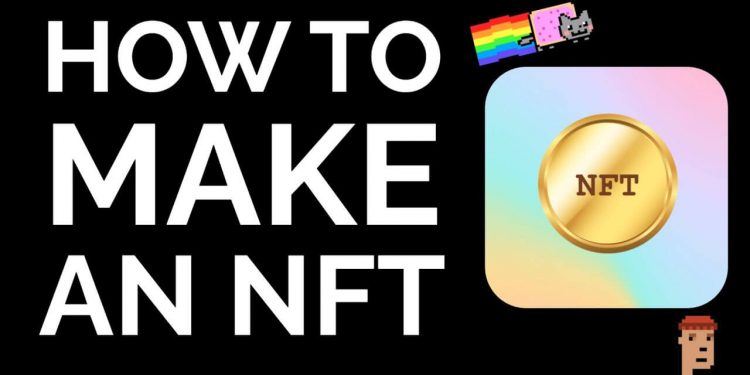Non-fungible tokens, or NFTs, are exploding in the digital asset market. Millions of dollars are paid to artists and designers for their work. This is crucial for a community that has struggled to realize the true value of its artwork. Almost every musician has suffered copyright infringement concerns at some point in their career, and NFTs have effectively remedied this problem. NFTs not only share the artists’ artwork but also keep the ownership record on the blockchain, delivering a feeling of relief as well as an immutable and verifiable ownership history for specific goods.
In this essay, I will outline five easy steps you may take to create your own NFT.
Step 1: Initialize Moralis and Find the Smart Contract
The first thing we need to do is start Moralis. To do so, we’ll need a Moralis server, which you can get by signing in to the platform at moralis.io and choosing the “+Create a new App” button in the upper right corner of the screen. Select “Testnet Server” from the drop-down menu. You must now provide a name, pick a region, and select the Ropsten Testnet. After that, locate the “Application ID” and “Server URL” by selecting your server’s “View Details” button.
With this knowledge, we may set up Moralis in the following manner.
A smart contract is required for our NFT minting dApp to work. However, we will not be discussing the creation of smart contracts in this post. However, we’ve chosen to supply you with a ready-made smart contract that you can easily plug into your code. You must enter the following information to achieve this:
If you want to have a closer look at the smart contract, you can find it in the GitHub repository. Furthermore, if you want to understand more about smart contracts in general, we suggest reading the Moralis blog post that explains how to build smart contracts.
Step 2: Create an HTML Index File
We may construct an HTML index file when we have set up Moralis and applied the smart contract into our code. This file includes the code for all of our website’s fields and buttons. As an example, you might make an interaction button that enables people to check in to MetaMask. Furthermore, we must have areas for entering a login, email address, and so forth.
However, putting the complete code as well as all of the buttons here would be superfluous. Instead, we suggest that you examine the whole file on GitHub, which will provide you with a better knowledge of the code. However, here’s a little example for you to look at right away:
The final line of code in the picture above deserves special emphasis since it is critical to the dApp’s operation. As you can see, the “Upload and Mint” button runs the logic for minting and uploading the NFT websites to the blockchain using the “upload()” method.
With an HTML index file completed, we can continue on to examine the logic of this application to learn more about how the platform operates.
Step 3: Login Function
We can return to the JavaScript file where we started Moralis and implemented the smart contract for the third stage in our process. In this section, we’ll write a function that will allow our users to log in and authenticate themselves. This is a basic function that is activated when the “Connect MetaMask” button is pressed. When the function is finished, it will look like this:
Users would have entered login and an email address before clicking the button on the dApp interface. Once the method is run, these two fields, as well as the button itself, are disabled, as seen in the code. This prevents users from changing their username and email address or pressing the button again.
When the fields and buttons are disabled, an authentication function is activated. This allows users to identify themselves via MetaMask, a feature that is enabled by default in Moralis. When the users are authorized, the function retrieves both the name and the user in order to create a new user profile that is stored in the Moralis database.
Finally, the login method removes the “disabled” property from the page’s other components, enabling users to interact and create their own NFT.
Step 4: Upload Function
The upload function is the next thing we need to implement. This is the previously described function, which is called when the dApp’s “Upload and Mint” button is pressed. The function will look like this in its entirety:
The first section of the program links the file that the users upload and stores it in an array. As a result, we must additionally refer to the first member in this array, which is accomplished by the second line of code. Finally, the third line generates a new Moralis file object, which is required to run the remainder of the procedure.
Because the user has no need to interact with the buttons and forms on the homepage once the file is produced, they are deactivated through code.
Save with IPFS
Now that the code has constructed a Moralis object for the file, it can be saved using IPFS (InterPlanetary File System). To save the file, just execute the following command, which is part of the process described above:
This exhibits Moralis’s strength since just one line of code is required to submit a file to IPFS. Uploading a file to IPFS without Moralis would have been a considerably more difficult and time-consuming task.
When a file is saved to IPFS, Moralis returns the hash and the URI address (similar to a URL) of the file. As a result, each of these may be obtained using two easy Moralis commands. In the above example, we obtained the file’s URI below the line for uploading to IPFS.
We may build a metadata file providing the name, description, and URI of the file that users upload using the URI of the file. We can use this metadata file to construct a new Moralis object file for storage in IPFS. In this example, though, we’ll store the item as a JSON file. Once it has been saved to IPFS as a JSON file, we can get the metadata URI and utilize it when using the “mintToken” method.
Step 5: Mint Function
The mint function is the last stage in developing our NFT minting dApp. This function begins by creating a new object with an encoded function call. The reason for this is because such a function call is required when we execute the transaction to the smart contract.
Once the encoded function has been constructed, it will be added to the “transactionParameters” object, along with the address for the smart contract that we entered in the previous step.
The function’s last step is to transmit the transaction to the blockchain, which will return a transaction hash. In addition, the transaction ID, which certifies that the NFT was printed, is returned to the user. The whole function seems to be as follows:
So, by following these five easy steps, we were able to construct a dApp that can be used to generate your own NFT in a matter of seconds. Please keep in mind, however, that each time the application is used to mint an NFT, we will be paid a modest fee to complete the transaction.
Follow Techdee for more!





